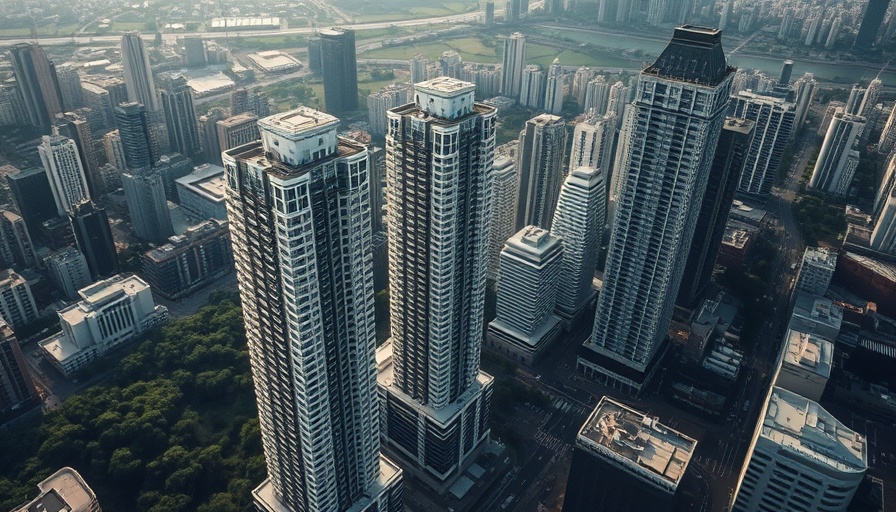
Unveiling the Mystery of Kaleidoscope Mall
If you've ever wandered through the Kaleidoscope Mall in Mission Viejo, you might have been struck by an eerie sense of isolation. Despite the bright lights and open doors, this once-prominent shopping destination now evokes the feeling of a ghost town. With empty shopping spaces and a faint smell of neglect in the air, one might question: how did a vibrant space transform into this deserted shell of its former self?
The Rise and Fall of a Southern California Experience
Kaleidoscope Mall, sprawling over 243,000 square feet, opened its doors 27 years ago, attempting to compete with the bustling mall scenes of supercenters like South Coast Plaza. However, while places like the Grove in Los Angeles continue to attract millions, Kaleidoscope's fate has diverged radically, leading to a peculiar, almost haunting atmosphere even on busy days.
On a typical Tuesday afternoon, the mall is largely abandoned, with only a handful of visitors meandering through its corridors. Observers, such as local resident Sarah Akers, note a discomforting truth: while businesses remain, customers seem to have disappeared. “It’s a ghost town,” she remarked, indicating the paradox of a space alive in operation but dead in spirit.
Can Urban Spaces Reclaim Their Thriving Past?
The fate of Kaleidoscope raises important questions about malls across America. Urban centers throughout California have often seen rejuvenated interest and transformation. For instance, malls like Laguna Hills and Brea have begun diversifying into mixed-use spaces that incorporate residential areas, grocery stores, and entertainment options.
In contrast, the ghostly ambiance at Kaleidoscope may indicate a need for more innovative solutions. What if the mall could shift to a communal space where local artists showcase their work, or turn part of its floor plan into a farmers' market? Without decisive action, the mall risks further decay, leaving a lasting impression on both the local economy and community spirit.
Lessons Uncovered: Embracing Change
As properties like Kaleidoscope face an identity crisis, they serve as case studies in the strategies needed for urban renewal. Emphasizing adaptive reuse can breathe life back into these stagnant spaces. Consider how repurposing parts of the mall for leisure activities—trampoline parks, pop-up markets—might enhance community interaction while drawing in foot traffic.
Moreover, addressing physical conditions and safety is crucial. The mall’s environment echoes an unsettling neglect; dripping faucets and broken equipment signal deeper issues that extended downtime can exacerbate.
Homeowners and Community Influence
Potential homeowners and residents have a vested interest in their urban surroundings. Empty structures can lead to lowered property values and a dreary atmosphere. So, what can community members do? Engage with local councils and represent their desires for developing spaces that are inclusive, vibrant, and sustainable.
The transition from stores that no longer attract visitors to community centers should be a collaborative process. Alongside the government’s involvement, community input can shape the future of declining urban spaces like Kaleidoscope Mall.
Conclusion: A Call for Action
The story of Kaleidoscope Mall is not just about the history of a physical space ravaged by time; it reflects broader trends impacting places across the nation. For homeowners, community leaders, and urban planners, the decline of shopping malls underscores the necessity to evolve and adapt. Everyone has a role to play in reclaiming these public spaces; engaging in discussions about their futures can lead to vibrant new uses. Consider how you might get involved in shaping your community's future—be it through local meetings, social media, or partnerships with local artists and businesses.
As such, let's strive for revitalized urban centers that honor their past while embracing an adaptable present. Let's not let our communal spaces fade into forgotten shadows.
 Add Row
Add Row  Add
Add 




Write A Comment